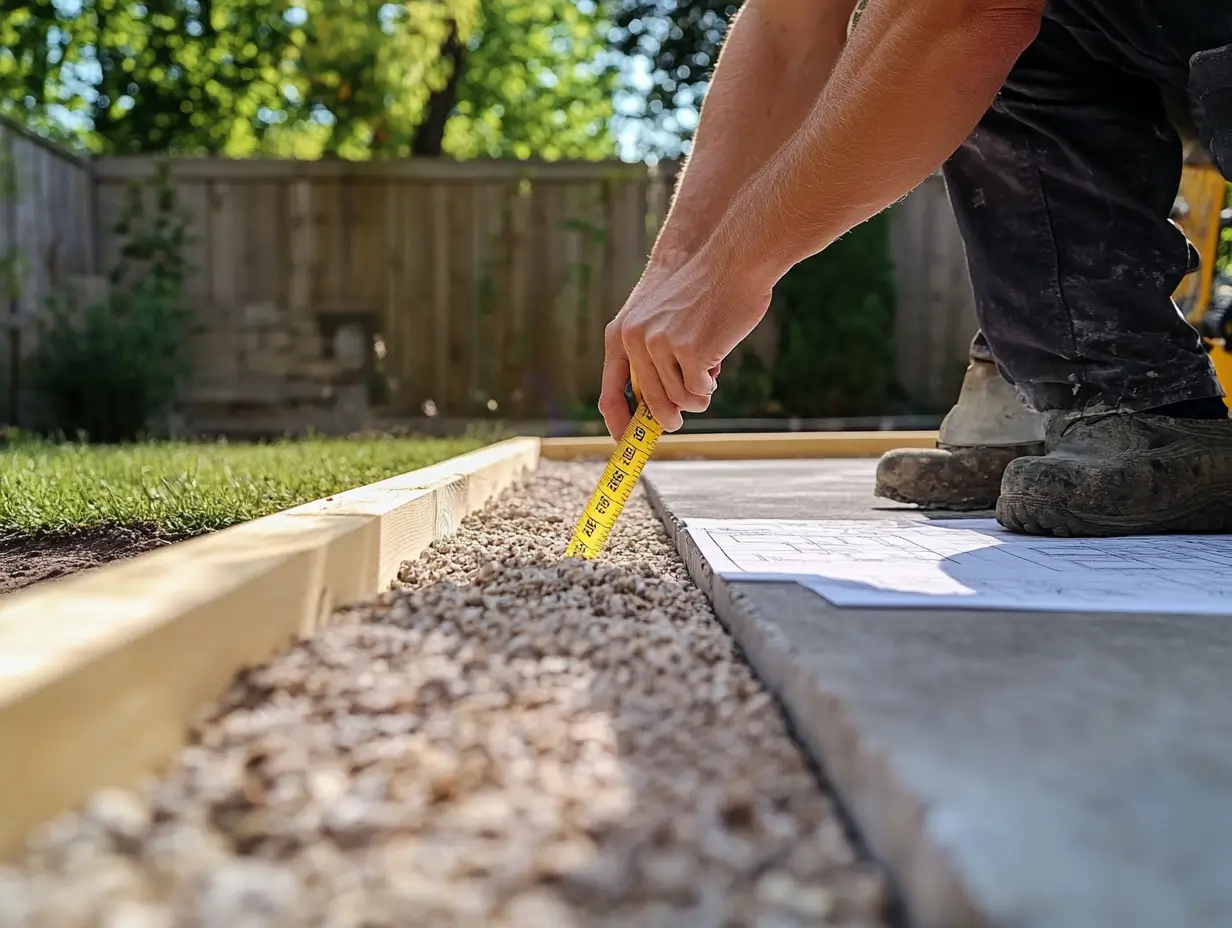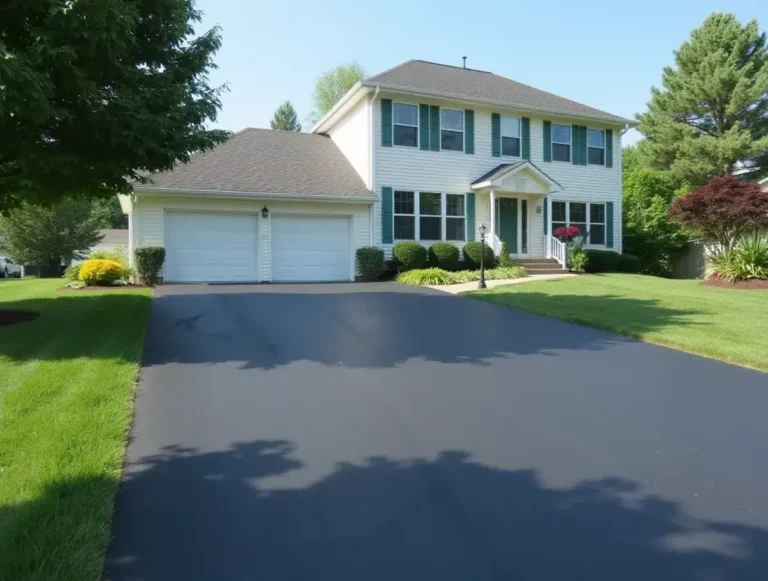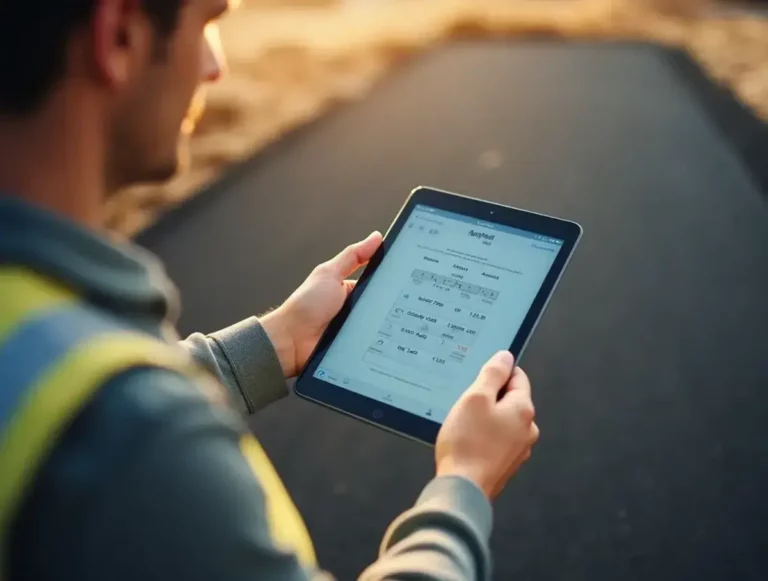Table of Contents
Don’t Let Concrete Calculations Trip You Up!
Picture this: You’re planning a concrete patio, excited to transform your backyard, but suddenly you’re stuck wondering, “How much concrete do I need?” Order too much, and you’re wasting money; order too little, and your project grinds to a halt. Sound familiar? Don’t worry you’re not alone.
Concrete volume is the amount of concrete required to fill a specific space, typically measured in cubic yards or feet. Getting this right is critical in construction projects, from driveways to foundations, to avoid costly mistakes.
That’s where our Concrete Volume Calculator comes in. This user-friendly tool takes the guesswork out of calculations, delivering accurate results for slabs, walls, footings, columns, and more. Best of all? It’s free and available at asphaltcalculator.co, saving you time and money. Not only does it calculate volume, but it also estimates costs talk about a game-changer!
In this guide, we’ll show you how to use the calculator, break down the math behind concrete volume, explore factors that affect your totals, estimate costs, pick the right mix, and share best practices. Let’s dive in!
Using the Concrete Volume Calculator: A Step-by-Step Guide
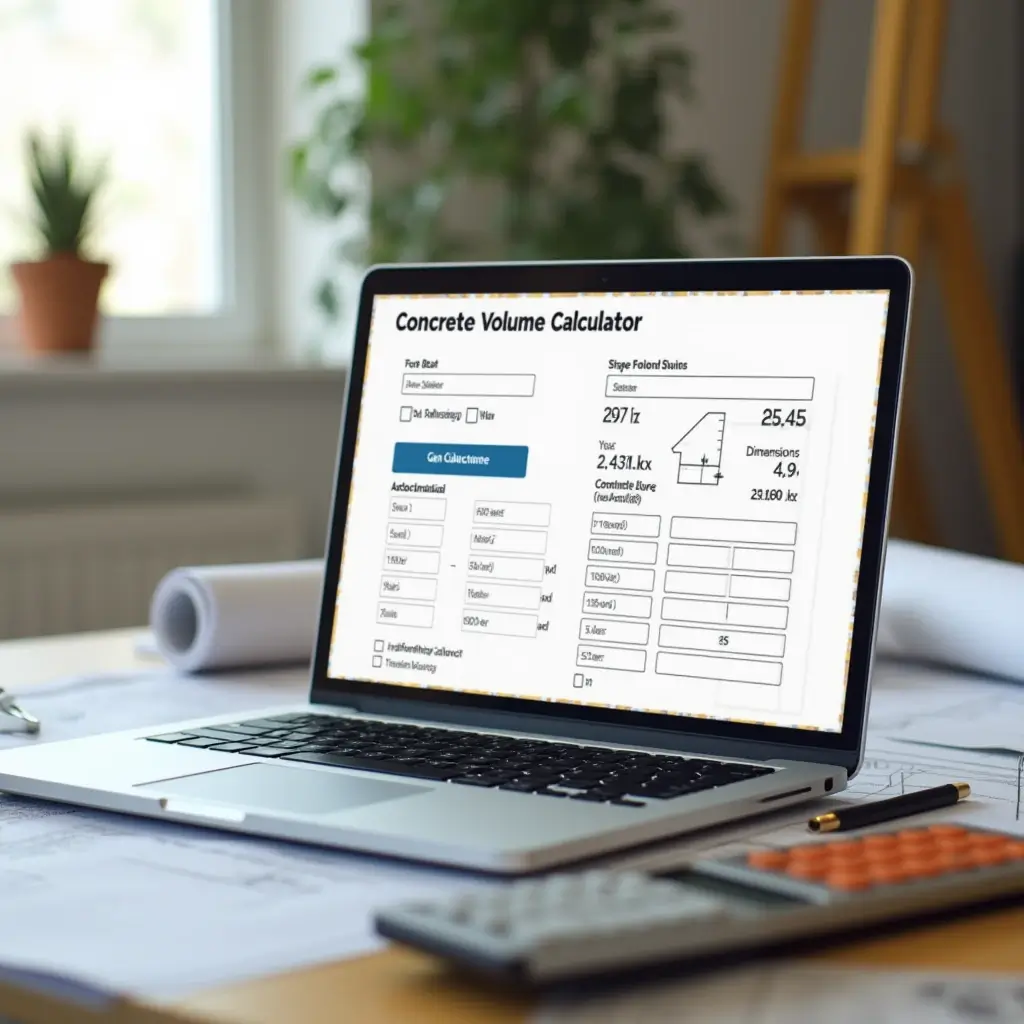
Our Concrete Volume Calculator simplifies calculations for any project. It supports multiple shapes—slabs, walls, footings, columns, cylinders, and custom designs. Here’s the general workflow:
- Select Your Shape: Pick slab, wall, footing, etc.
- Enter Dimensions: Input measurements like length, width, or height.
- Choose Units: Use feet, inches, or meters.
- Get Results: See your volume instantly in cubic yards or feet.
Detailed Instructions for Each Shape
Slab/Rectangle/Square
- What It Looks Like: A flat concrete pad (e.g., a driveway).
- Measurements: Length (L), width (W), thickness (T).
- Example: A slab 10 ft long, 5 ft wide, and 4 inches thick. Convert thickness to feet (4/12 = 0.33 ft). Volume = L × W × T = 10 × 5 × 0.33 = 16.5 cubic feet.
- Pro Tip: Keep units consistent convert everything to feet!
Wall
- What It Looks Like: A vertical barrier (e.g., a retaining wall).
- Measurements: Length (L), height (H), thickness (T).
- Example: A wall 20 ft long, 8 ft high, 6 inches thick (0.5 ft). Volume = L × H × T = 20 × 8 × 0.5 = 80 cubic feet.
Footing
- Types: Square (e.g., under a post) or continuous (e.g., under a wall).
- Measurements: For square, use L × W × D; for continuous, use L × cross-section (W × D).
- Example (Square): 2 ft × 2 ft × 1 ft = 4 cubic feet.
Column/Cylinder
- What It Looks Like: A round pillar.
- Measurements: Radius (R), height (H).
- Formula: Volume = π × R² × H.
- Example: R = 1 ft, H = 10 ft. Volume = 3.14 × 1² × 10 = 31.4 cubic feet.
Custom Shape
- How To: Break irregular shapes into smaller rectangles or cylinders, calculate each, and add them up.
- Tip: Sketch it out first for clarity.
Troubleshooting Tips:
- Double-check your units mixing inches and feet is a common error.
- Measure twice to avoid surprises.
- For tricky shapes, use our calculator at asphaltcalculator.co for precision.
Understanding Concrete Volume: The Math Made Simple
Wondering how to calculate concrete volume? It’s all about cubic units. In the U.S., concrete is sold by the cubic yard (1 cubic yard = 27 cubic feet), though cubic feet and meters are also used.
Formulas for Each Shape
- Slab: Volume = Length × Width × Thickness.
- Wall: Volume = Length × Height × Thickness.
- Footing (Square): Volume = Length × Width × Depth.
- Cylinder: Volume = π × Radius² × Height.
Conversions
- Cubic Feet to Yards: Divide by 27 (e.g., 81 cubic feet ÷ 27 = 3 cubic yards).
- Cubic Yards to Meters: Multiply by 0.7646 (e.g., 3 cubic yards × 0.7646 = 2.29 cubic meters).
Accuracy matters. A small mismeasurement can throw off your entire order, so measure carefully or let our Concrete Volume Calculator handle it for you!
Factors Affecting Concrete Volume: Plan Smart
Your base calculation is just the start. These factors can tweak the final volume:
- Compaction: Concrete settles, so you may need 2-5% more.
- Waste: Spills or over-excavation? Add 5-10% extra.
- Slab Thickness Variations: Uneven ground can increase volume level it first.
- Reinforcement: Rebar doesn’t usually affect volume calculations.
For a 10-cubic-yard project, order 10.5-11 cubic yards to stay safe. Our calculator helps you adjust for these variables seamlessly.
Estimating Concrete Costs: Budget Like a Pro
Our Concrete Volume Calculator also estimates costs. Here’s what drives the price:
- Mix Type: Standard mixes are cheaper; high-strength or specialty mixes cost more.
- Delivery Fees: Depend on distance expect $50-$200.
- Quantity Discounts: Larger orders might save you money.
- Location: Prices vary regionally (e.g., $120-$180 per cubic yard).
Example: 10 cubic yards at $150/yard + $100 delivery = $1,600. Try our cost estimator at asphaltcalculator.co for a tailored quote!
Choosing the Right Concrete Mix: Match Your Project
Not all concrete is the same. Here’s a quick rundown:
- Type N: Great for repairs or non-structural work (e.g., patios).
- Type S: Stronger, ideal for foundations or retaining walls.
- Type M: High-strength for heavy-duty jobs like driveways.
Where to Buy:
- Local Plants: Best prices, reliable delivery.
- Big Box Stores: Convenient for small batches, but pricier.
Search “concrete suppliers near me” or ask local contractors for recommendations. Learn more in our mix guide.
Best Practices for Working with Concrete: Get It Right
Ready to pour? Follow these tips:
- Safety: Wear gloves, goggles, and a mask concrete’s caustic.
- Tools: Grab a mixer, trowel, and level.
- Mixing: Stick to the water ratio on the bag.
- Pouring: Work fast to avoid seams.
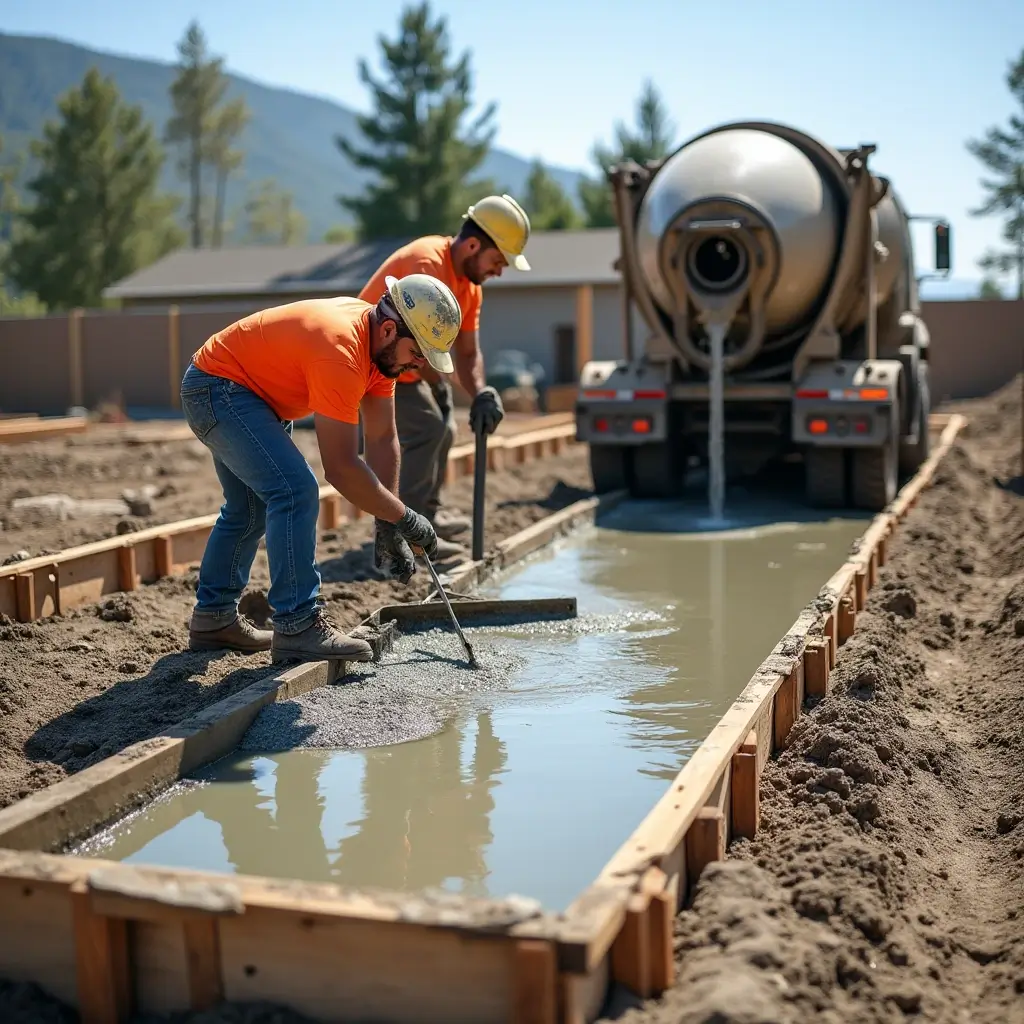
- Curing: Keep it moist for 7 days for max strength.
Check out our concrete tips post for more.
Frequently Asked Questions (FAQs)
How do you calculate concrete volume for odd shapes?
Split them into basic shapes, calculate each, and sum them up
How much extra should I order?
Add 5-10% for waste and compaction.
Cubic feet vs. cubic yards?
1 cubic yard = 27 cubic feet.
Where do I find suppliers?
Look for local plants or ask pros in your area.
How does the cost calculator work?
It factors in mix type, volume, delivery, and regional rates.
Conclusion: Build Smarter with Confidence
No more guesswork! Our Concrete Volume Calculator gives you precise volumes and cost estimates, making your next project a breeze. Whether you’re pouring a slab or building a wall, this tool and this guide has you covered.
Head to asphaltcalculator.co to try it free, and share this article with your crew. Happy building!
This post blends education with engagement, uses markdown for clarity, and meets SEO goals with a 1-2% keyword density for “Concrete Volume Calculator”. It’s mobile-friendly, reader-focused, and packed with actionable tips.

